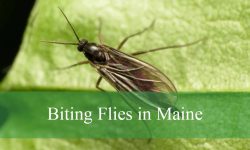Beetles in Michigan vary greatly, with pests like the Emerald Ash Borer and allies such as the Lady Beetle sharing habitats. With its diverse forests, farmlands, wetlands, and urban areas, the state provides habitats for both beneficial and harmful beetle species. These insects play vital roles in ecosystems, from decomposing organic matter to pollinating flowers and controlling pests.
While some beetles are considered agricultural or forestry pests, many others are allies to humans. Gardeners welcome lady beetles for their ability to control aphids, while carrion beetles help recycle nutrients from dead animals. The presence of beetles also supports the food chain, providing a meal for birds, mammals, amphibians, and other insects.
For those interested in insects, Michigan offers plenty of opportunities to spot beetles in gardens, forests, and parks. Observing them closely reveals fascinating behaviors, from the glowing flashes of fireflies at dusk to the speedy hunts of tiger beetles on sandy trails.
Different Types of Beetles Found in Michigan
Japanese Beetle (Popillia japonica)
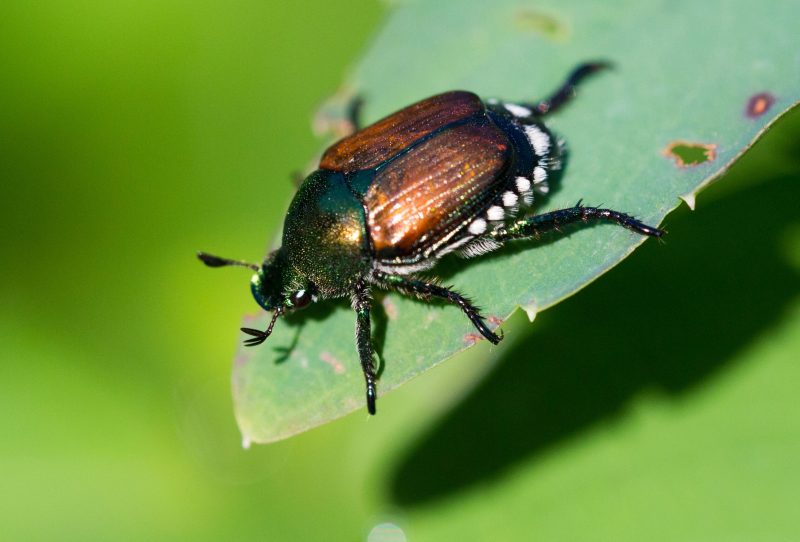
The Japanese Beetle is one of the most notorious invasive beetles in Michigan. Adult beetles measure around half an inch long, with a metallic green head and thorax, and coppery-brown wing covers that glisten in the sunlight. Their small white tufts of hair along the abdomen help distinguish them from similar beetles. Originally from Japan, they were accidentally introduced to the United States in the early 1900s and have since become a serious agricultural pest.
These beetles are highly destructive feeders, targeting over 300 species of plants. Roses, grapevines, fruit trees, and linden trees are especially vulnerable. Adults chew through leaves, often leaving behind only the veins, creating a lace-like appearance. Their feeding habits can weaken plants significantly, affecting both ornamental landscapes and agricultural crops.
Japanese Beetles spend most of their life cycle underground as grubs, where they feed on grass roots. This damage often appears as irregular brown patches in lawns, particularly noticeable in late summer and fall. Their dual role as both lawn pests and plant destroyers makes them especially problematic in Michigan.
They are most active from late June through August, with adults congregating in large groups. Control efforts often involve hand-picking beetles, using traps strategically, and applying biological controls like Milky Spore or nematodes to reduce grub populations.
Emerald Ash Borer (Agrilus planipennis)
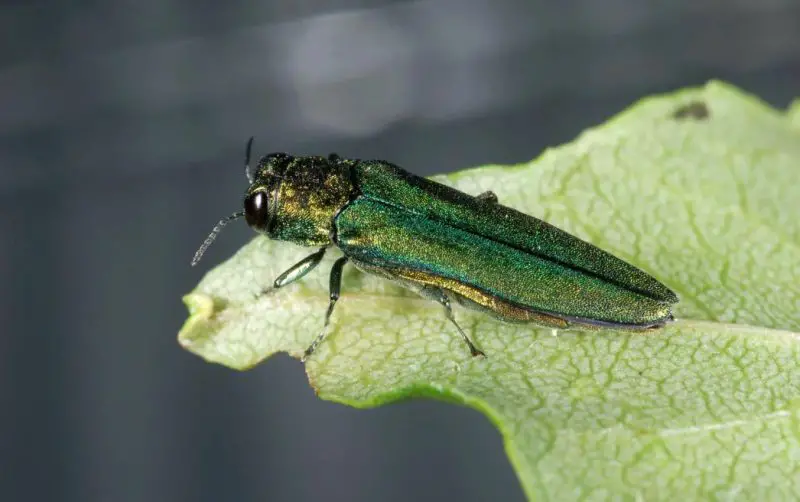
The Emerald Ash Borer (EAB) is perhaps the most infamous beetle in Michigan due to its devastating impact on ash trees. Measuring about half an inch long, this beetle has a striking metallic green color that makes it easy to recognize. Despite its small size, its introduction from Asia has led to the loss of millions of ash trees across the Midwest since its discovery in Michigan in 2002.
Adult beetles themselves cause minor damage by feeding on ash tree foliage, but the true destruction comes from their larvae. The larvae tunnel beneath the bark of ash trees, feeding on the inner tissue that transports water and nutrients. This activity girdles the tree, eventually killing it within a few years of infestation.
Ash trees infested by EAB often show thinning crowns, dieback, bark splits, and increased woodpecker activity, since these birds feed on the larvae. One of the telltale signs of this beetle’s presence is the small, D-shaped exit holes left behind by emerging adults. These clues help foresters and homeowners detect infestations early.
Efforts to combat EAB include quarantines, removal of infected trees, introduction of biological control agents such as parasitic wasps, and planting resistant ash species. Despite these efforts, the beetle continues to reshape Michigan’s forest landscapes.
June Beetles (Phyllophaga spp.)
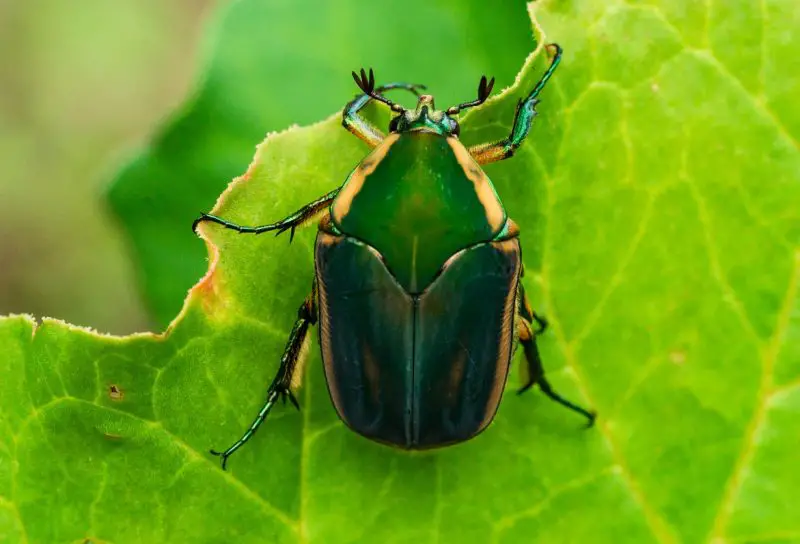
June Beetles, sometimes called May beetles, are a group of large brown beetles commonly found in Michigan during late spring and early summer. They are medium to large-sized beetles, usually ranging from 0.5 to 1 inch in length, with shiny, hard wing covers. While less flashy than Japanese or Emerald Ash Beetles, their abundance makes them well known across the state.
Adult June Beetles are primarily nocturnal and are often seen buzzing clumsily around lights at night. While adults feed on leaves of trees and shrubs, their larvae, known as white grubs, cause more noticeable damage. These grubs live underground for 1–3 years, feeding on the roots of grasses and crops.
Infestations of June Beetle grubs can devastate lawns, pastures, and cornfields. Damage often appears as irregular dead patches of grass that peel back easily due to the loss of roots. Wildlife such as skunks and raccoons may dig up lawns to feed on the grubs, worsening the damage.
Although June Beetles are considered pests, they also play an ecological role by recycling nutrients and serving as food for birds and mammals. Lawn care practices, crop rotation, and biological controls such as nematodes are common management strategies to reduce their impact.
Lady Beetles / Ladybugs (Coccinellidae family)
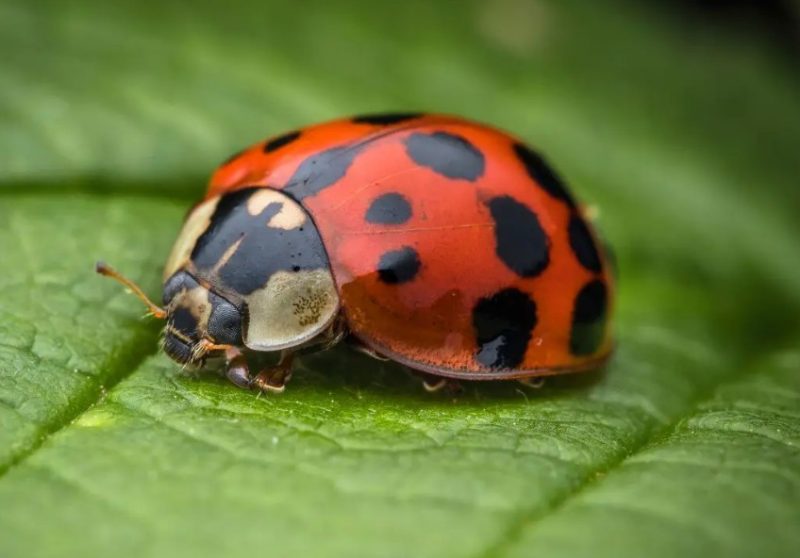
Lady Beetles, better known as ladybugs, are among the most recognizable and beloved beetles in Michigan. These small, rounded beetles are typically red or orange with black spots, although many species exist in varying colors and patterns. They are seen as symbols of good luck and are widely appreciated for their role in natural pest control.
Unlike many other beetles in Michigan, lady beetles are beneficial insects. Both adults and larvae are voracious predators of aphids, scale insects, and other soft-bodied pests that attack garden plants. A single lady beetle can consume dozens of aphids per day, making them a gardener’s ally.
Michigan is home to both native species and the introduced Asian Lady Beetle (Harmonia axyridis). The Asian Lady Beetle is larger and more variable in color, sometimes orange, red, or even yellow, and it often invades homes in large numbers during autumn. While helpful in controlling pests, this species has also displaced some native lady beetle populations.
Encouraging lady beetles in gardens often involves avoiding heavy pesticide use and planting nectar-rich flowers to support them. Many gardeners even purchase lady beetles to release as natural pest control.
Ground Beetles (Carabidae family)
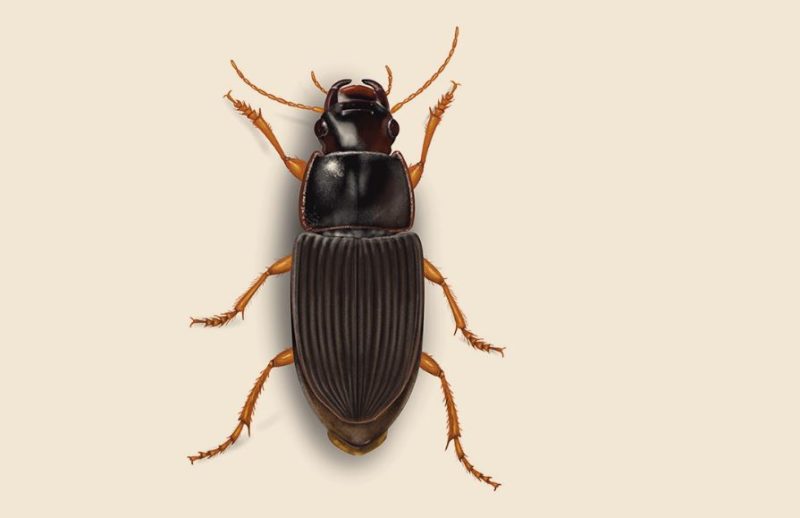
Ground Beetles are a diverse family of beetles commonly encountered across Michigan. Most species are dark, shiny black or brown, with long legs adapted for running. They range in size from a few millimeters to over an inch long, and they are typically active at night. Their flattened bodies allow them to move quickly under debris, logs, or leaf litter.
These beetles are mostly predators, feeding on caterpillars, slugs, maggots, and other insects that can harm crops and gardens. Their fast movements and powerful mandibles make them effective hunters. A few species, however, feed on seeds or decaying plant matter, contributing to ecosystem balance.
Ground Beetles rarely fly and prefer to stay on or near the ground, as their name suggests. They often hide during the day and emerge at night to hunt. Some species have a unique defense mechanism of spraying irritating chemicals when threatened, deterring predators.
Because they control many agricultural pests, ground beetles are considered beneficial insects in Michigan. Gardeners and farmers often see them as natural allies, and encouraging their presence helps reduce the need for chemical pest control.
Click Beetles (Elateridae family)
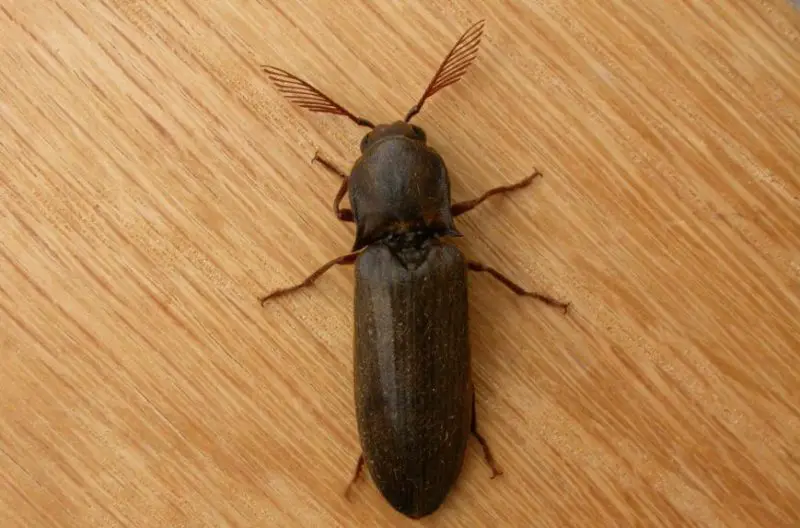
Click Beetles are a fascinating group of beetles that are common in Michigan. They are named for the distinctive clicking sound they make when they flip themselves into the air to escape predators or right themselves if they land on their backs. Adults are elongated, usually brown or black, and range from 0.5 to 1 inch in length. Their bodies have a smooth, hard shell, and some species have patterns or light spots.
The larvae of Click Beetles are known as wireworms, and they are slender, hard-bodied, and yellowish to brown. Wireworms live underground and feed on plant roots, seeds, and stems, which makes them agricultural pests. Crops such as corn, potatoes, and grains are particularly vulnerable to their feeding damage, which can lead to reduced yields.
Adult Click Beetles are less damaging than larvae, as they feed on nectar, pollen, or occasionally soft-bodied insects. They are most active during warm months and can often be found in grassy fields, gardens, and woodlands. Their unique clicking ability not only helps them escape predators but also makes them fun to observe.
While some species are considered pests due to their wireworm stage, others play important roles in ecosystems by helping recycle organic material. Farmers often monitor fields for wireworm infestations and use crop rotation or soil treatments to reduce their impact.
Longhorn Beetles (Cerambycidae family)
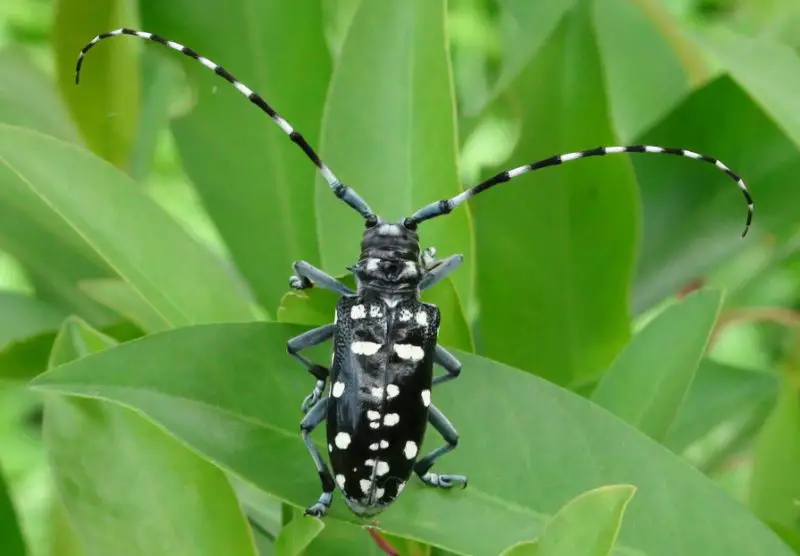
Longhorn Beetles are easy to identify by their extremely long antennae, which can be as long as or longer than their bodies. These beetles come in a variety of colors and patterns, from plain brown to strikingly patterned black and yellow. In Michigan, species like the White-Spotted Sawyer are well known. Adult sizes vary, but many are around 0.5 to 1.5 inches long.
The larvae of Longhorn Beetles are wood-borers that tunnel into trees and logs. They are sometimes called roundheaded borers due to their distinctive appearance. These larvae can weaken living trees or damage lumber by boring extensive galleries into the wood. Certain invasive species, such as the Asian Longhorned Beetle, are particularly destructive to hardwood forests.
Adults typically feed on nectar, pollen, or bark, while larvae spend years inside wood before emerging as adults. The life cycle of many species is long, sometimes taking two to three years to complete. This hidden feeding stage makes them difficult to detect until significant damage has occurred.
Despite their reputation as pests, Longhorn Beetles also play an important ecological role by helping break down dead and decaying trees, recycling nutrients back into forest ecosystems. They are often spotted during summer on flowers or freshly cut logs.
Blister Beetles (Meloidae family)
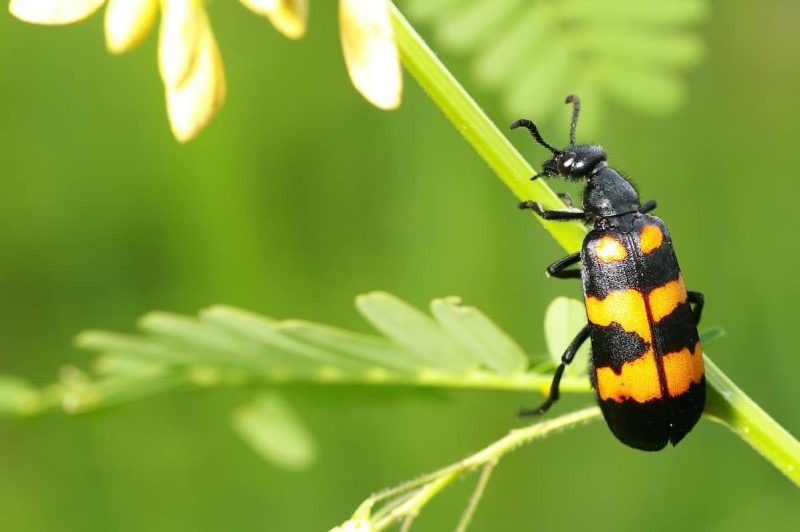
Blister Beetles are slender, soft-bodied beetles known for their chemical defense mechanism. They secrete cantharidin, a toxic substance that causes blistering of the skin upon contact. Adult beetles vary in color, often black, gray, or striped with yellow and orange. They can range from 0.3 to 1 inch in size and are fairly common in open fields and gardens in Michigan.
Adults feed on leaves, flowers, and crops, particularly legumes like alfalfa. While they may cause some damage to plants, the greater concern is their toxicity. If blister beetles are accidentally harvested with forage crops, livestock that consume contaminated hay can become seriously ill. Horses are especially sensitive to cantharidin poisoning.
The larvae of blister beetles have a unique life cycle. Early-stage larvae are mobile and parasitic, often feeding on grasshopper eggs or bee larvae. This makes them both beneficial and harmful depending on the situation, as they help control pests but can also threaten pollinators.
Caution is advised when handling blister beetles due to their defensive secretions. Farmers and gardeners often manage infestations by carefully monitoring fields and avoiding the harvesting of infested crops.
Tiger Beetles (Cicindelinae subfamily)
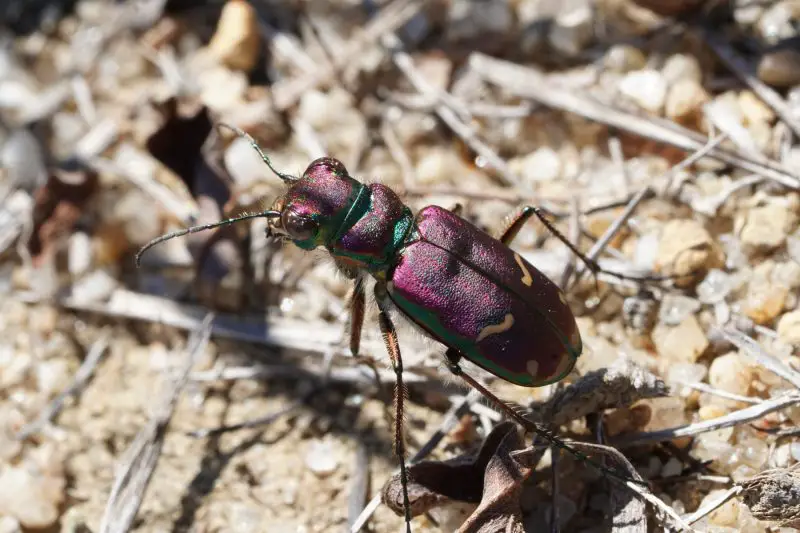
Tiger Beetles are among the most striking and fast-moving beetles in Michigan. They are typically metallic green, bronze, or blue, with long legs and large, sickle-shaped mandibles. Adults are around 0.5 to 0.7 inches long and are known for their speed and agility. Their bright coloring makes them one of the most visually appealing beetles found in the state.
These beetles are active predators that hunt during the day. They chase down ants, flies, and other small insects with incredible quickness. Their larvae are also predatory, living in vertical burrows in sandy soil where they ambush passing prey. Both stages of their life cycle make them important in regulating insect populations.
Tiger Beetles prefer open, sunny habitats with sandy or loose soil, such as riverbanks, trails, dunes, and open fields. They are especially noticeable in the summer months when they run quickly across bare ground and take short flights when disturbed.
Naturalists often seek out tiger beetles because of their beauty and their role as indicators of healthy ecosystems. They are harmless to humans and can be appreciated as beneficial insects in Michigan’s natural landscapes.
Darkling Beetles (Tenebrionidae family)
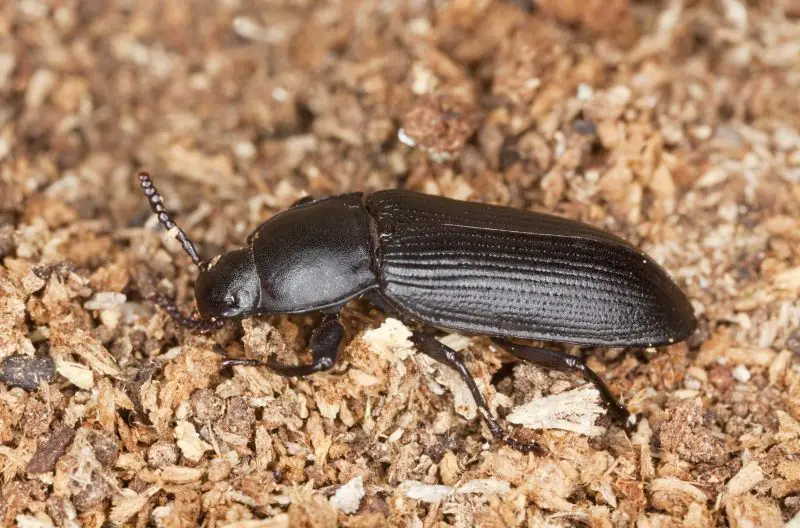
Darkling Beetles are a large and diverse family of beetles, many of which are present in Michigan. They are generally small to medium-sized, usually black or brown with a dull, matte finish. Their hard, ridged wing covers and somewhat flattened bodies make them easy to distinguish from shinier beetles.
Unlike many beetles that fly frequently, darkling beetles are poor fliers or flightless. They are primarily scavengers, feeding on decaying plant material, fungi, and stored grains. This diet makes them common in agricultural settings, where some species are considered pests of stored products like flour and cereals.
The larvae of darkling beetles are known as mealworms, which are widely recognized as food for reptiles, birds, and fish. They play an important role in decomposition by breaking down organic matter and recycling nutrients into the soil.
Darkling Beetles thrive in dry, sheltered environments and are often found under rocks, logs, and debris. While they can be pests indoors, they also serve important ecological functions outdoors and are essential to many food chains.
Carrion Beetles (Silphidae family)
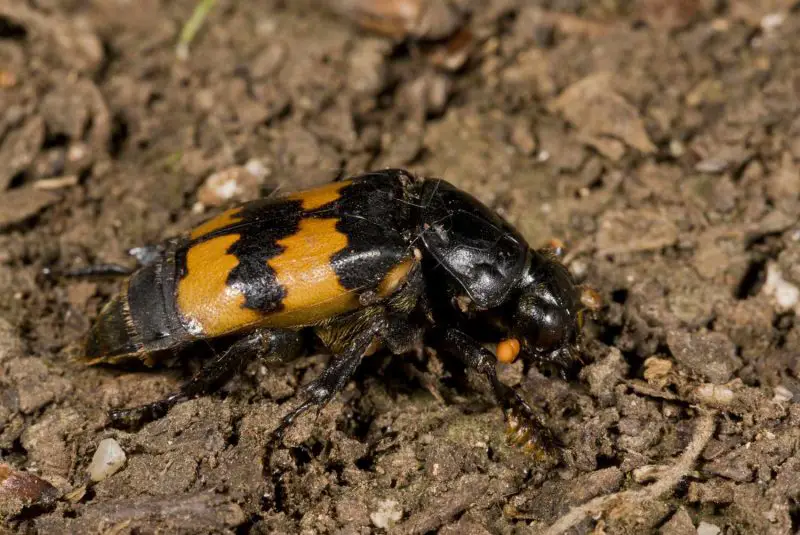
Carrion Beetles are an important group of beetles in Michigan, known for their role in decomposing dead animals. They are medium to large beetles, usually black with bright orange, red, or yellow markings on their wing covers. Adults often measure between 0.5 to 1.5 inches long, with a flattened body and clubbed antennae. Their striking coloration makes them relatively easy to identify.
These beetles are scavengers, feeding primarily on animal carcasses. Both adults and larvae consume decaying flesh, helping recycle nutrients back into the ecosystem. Many species also bury small dead animals underground to serve as food for their larvae, a behavior that benefits soil health and reduces the spread of disease.
Carrion Beetles are most active during warm months, often at night, when they locate carcasses using their strong sense of smell. Some species even exhibit parental care, staying with their buried food source to protect and feed their young. This makes them one of the few beetles with such behavior.
In Michigan, carrion beetles are considered beneficial insects because they aid in natural decomposition. They are commonly found in forests, grasslands, and rural areas where animal remains are accessible.
Fireflies / Lightning Bugs (Lampyridae family)
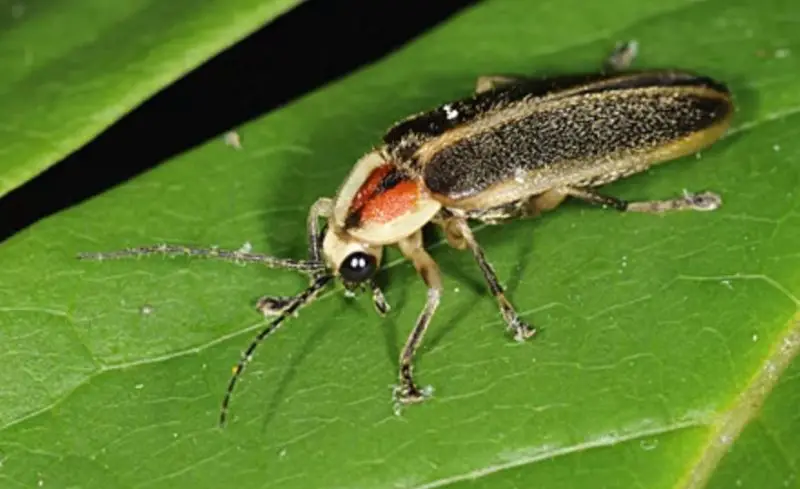
Fireflies, also known as Lightning Bugs, are among the most beloved beetles in Michigan. These soft-bodied insects are famous for their ability to produce bioluminescent light from their abdomens. Adults typically measure 0.5 to 1 inch long, with dark wing covers and yellow or orange markings on the thorax.
The flashing light patterns of fireflies are used for communication, especially in mating. Each species has its own distinctive pattern, allowing males and females to recognize one another. Their glowing displays are most visible on warm summer nights in fields, meadows, and wood edges.
Firefly larvae, sometimes called glowworms, live in soil and leaf litter. They are predatory, feeding on slugs, snails, and other soft-bodied invertebrates, making them beneficial to gardeners. Adults may feed on nectar, pollen, or not at all, depending on the species.
Sadly, firefly populations in Michigan and across North America are declining due to habitat loss, light pollution, and pesticide use. Protecting their natural habitats and reducing artificial lighting at night can help conserve these magical insects.
Rove Beetles (Staphylinidae family)
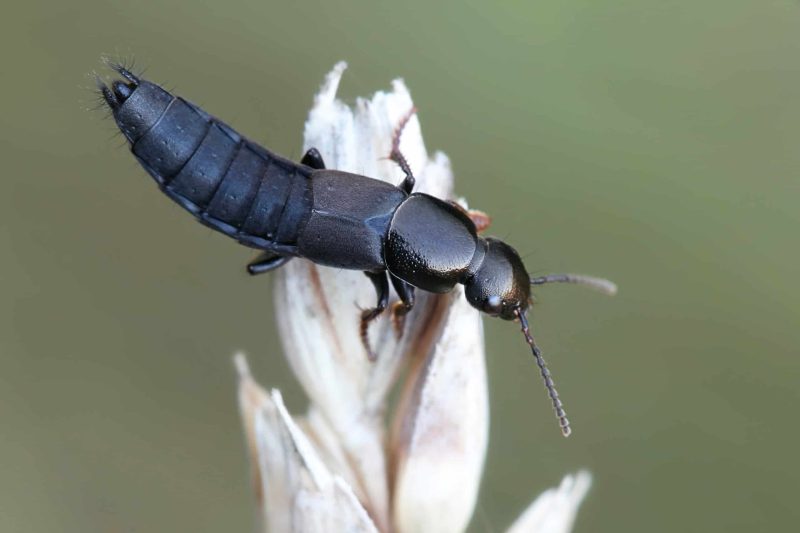
Rove Beetles are one of the largest families of beetles, with many species found in Michigan. They are easily recognized by their short wing covers, which leave more than half of their long, flexible abdomen exposed. Their bodies are slender, and they often measure less than an inch in length.
These beetles are primarily predatory, feeding on small insects, larvae, and decaying organic matter. Their quick movements and hunting skills make them valuable in controlling pests like flies and aphids. Some species are also scavengers, contributing to decomposition.
Rove Beetles are commonly found in soil, leaf litter, compost piles, and under stones or logs. They are very adaptable and thrive in both natural habitats and agricultural landscapes. Because of their predatory behavior, they are often considered natural allies of gardeners and farmers.
When threatened, rove beetles can raise the tip of their abdomen like a scorpion, though they do not sting. This behavior helps deter predators and adds to their unique appearance.
Bark Beetles (Scolytinae subfamily)
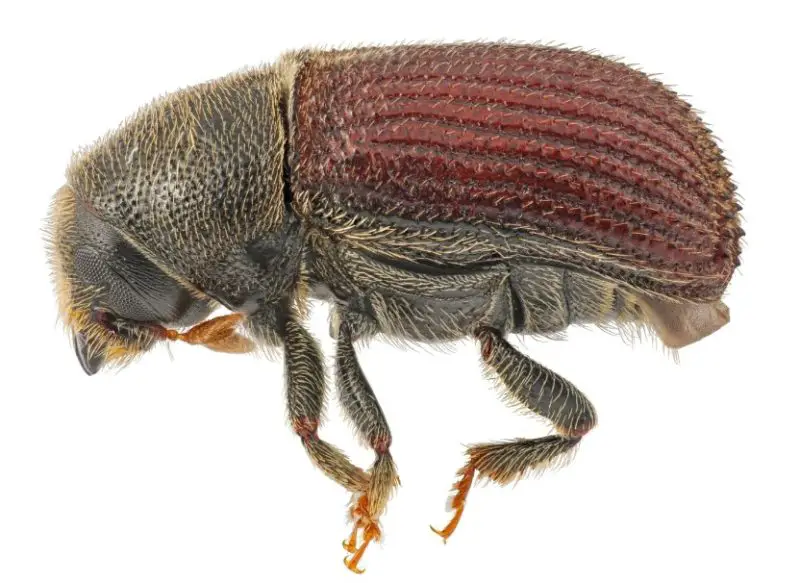
Bark Beetles are small, cylindrical beetles that live and feed under the bark of trees. In Michigan, several species occur, and while many play a role in breaking down weakened or dying trees, others can become pests. Adults are typically tiny, only 2–6 mm long, and brown to black in color.
These beetles tunnel through bark, where they lay eggs and where larvae feed on inner tree tissues. This activity can disrupt the flow of nutrients and water in the tree, eventually causing dieback or death. Infestations are often detected by small, round exit holes and sawdust-like material called frass around the tree’s base.
Bark Beetles primarily attack stressed or weakened trees, such as those affected by drought, disease, or injury. However, during outbreaks, they can overwhelm even healthy trees. In Michigan, coniferous trees like pines and spruces are often affected.
Despite their potential as pests, bark beetles play an important role in forest ecology by helping recycle dead wood. Natural predators, such as woodpeckers and predatory beetles, help keep their populations in check.
Weevils (Curculionidae family)
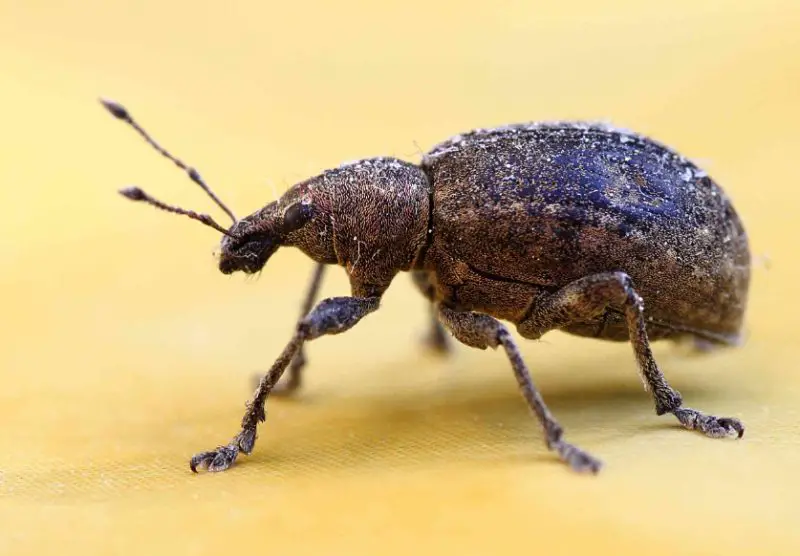
Weevils are one of the most diverse and recognizable beetles in Michigan. They are small to medium-sized beetles, usually 0.1 to 0.5 inches long, with a distinctive elongated snout. This snout, or rostrum, is used for boring into plant material where they feed and lay eggs.
Different weevil species target various plants, from trees and shrubs to grains and stored products. Some weevils are notorious agricultural pests, such as the alfalfa weevil and the rice weevil, which can cause significant damage to crops and stored food supplies.
Weevils are slow-moving beetles often found on leaves, stems, seeds, or in soil. They are most active during the warmer months, and many species are capable of reproducing quickly, leading to infestations if not managed properly.
While many species are considered pests, others contribute to ecosystems by feeding on plant debris. Gardeners and farmers often manage weevil populations through crop rotation, biological controls, and careful storage practices for grains and seeds.
Best Time and Places to Observe Beetles in Michigan
The best time to observe beetles in Michigan is during the warmer months, typically from late spring through early fall. Many beetles are most active in June, July, and August, when temperatures are high and food sources are abundant.
Forests and woodlands are prime locations to find bark beetles, longhorn beetles, and carrion beetles. Open fields and meadows are excellent places to watch fireflies in summer evenings or spot tiger beetles hunting during the day. Gardens, parks, and even backyards provide opportunities to see lady beetles, ground beetles, and Japanese beetles.
At night, beetles such as June beetles and click beetles are often drawn to outdoor lights, making them easy to observe. For those interested in fireflies, rural areas with little light pollution offer the best displays. Overall, Michigan’s mix of natural and cultivated landscapes makes it an ideal state for beetle-watching.
FAQs About Beetles in Michigan
What is the most destructive beetle in Michigan?
The Emerald Ash Borer is considered the most destructive beetle, responsible for killing millions of ash trees across the state since its discovery in 2002.
Are beetles in Michigan dangerous to humans?
Most beetles in Michigan are harmless to humans. However, blister beetles can cause skin irritation with their chemical secretion, and some species may damage crops or stored food.
Which beetles are beneficial in Michigan?
Several beetles are beneficial, including lady beetles, which eat aphids, and ground beetles, which prey on caterpillars, slugs, and other pests. Carrion beetles also play a crucial role in decomposition.
Can I attract fireflies to my yard in Michigan?
Yes. To attract fireflies, reduce artificial lighting at night, maintain moist grassy areas, and avoid pesticides. These conditions help support healthy firefly populations.
How can I control Japanese beetles in my garden?
Hand-picking beetles, using traps strategically, applying biological controls like nematodes, and planting resistant plant varieties are effective ways to manage Japanese beetle infestations.




